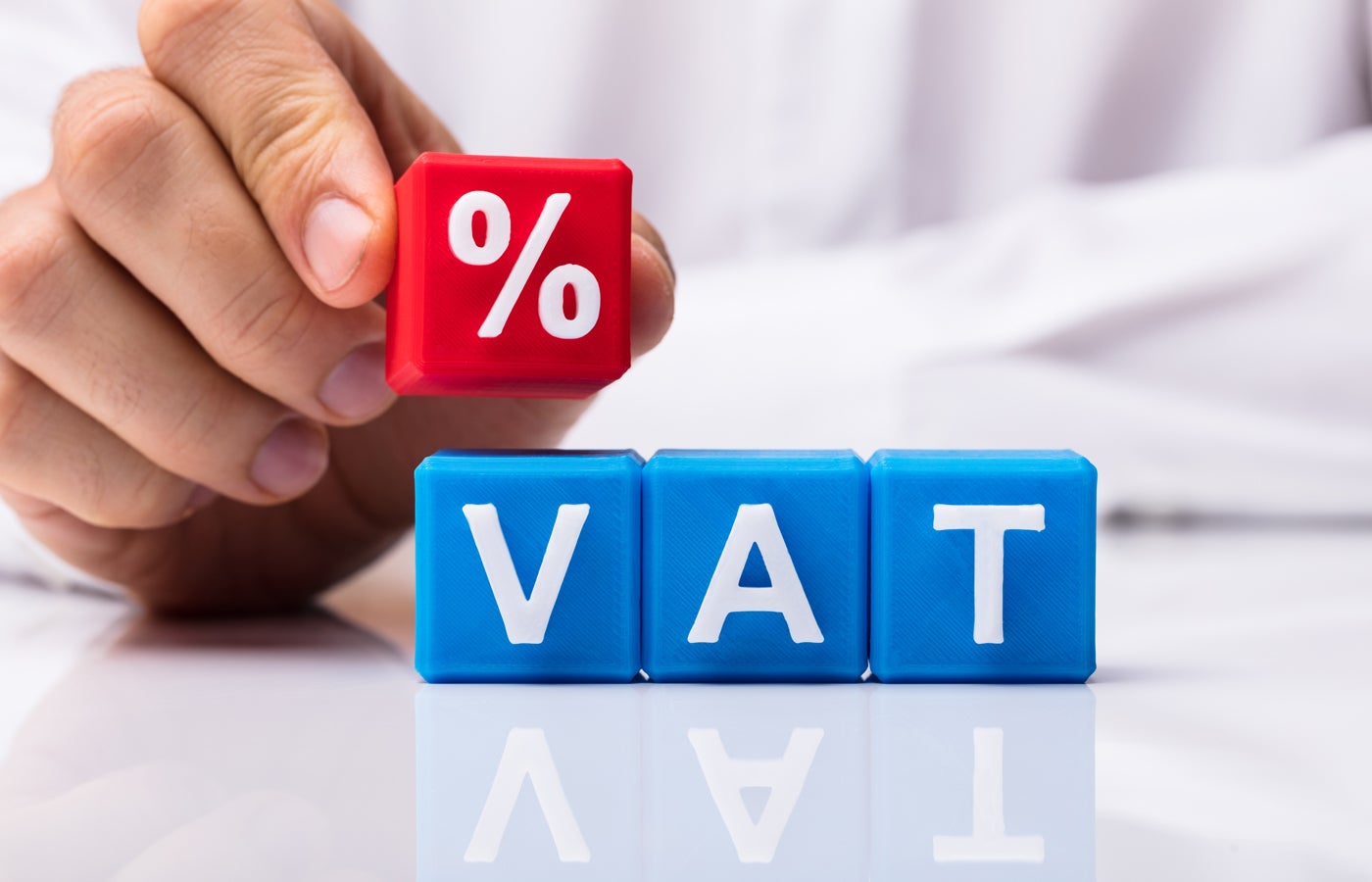The value added tax (VAT) is a consumption tax that applies to nearly all goods and services sold within the European Union (EU), including the United Kingdom (UK). Goods sold for export or services sold to customers who live outside these countries are typically not subject to VAT. The United States is one of the only industrialized countries that does not use a VAT.
Jump to:
- What is the value added tax (VAT) rate?
- How does value added tax work?
- Pros and cons of VAT
- How to file and pay VAT
- VAT vs. sales tax
What is the value added tax (VAT) rate?
Each country sets its own VAT rates. The European Union requires that each member country charge a VAT of a minimum of 15%, with exceptions allowed for certain categories — no maximum limit has been set for the VAT. The average VAT is 21% across all countries in the European Union.
Even though the UK is no longer part of the EU post-Brexit, the UK still uses a value added tax system. The UK technically has three VAT rates, which were most recently updated in 2011:
- Standard rate: 20%, charged for most goods and services.
- Reduced rate: 5%, charged for certain goods and services like home energy or children’s car seats.
- Zero rate: 0%, charged for most food and children’s clothes.
A few items, such as postage stamps, are totally exempt from VAT. However, you can expect to pay a VAT of 20% for most things in the UK.
How does value added tax work?
As discussed in the above section, value added tax is charged as a percentage of the price (as opposed to a flat fee). VAT is charged at each stage of production and distribution, up through the sale to the final consumer. Each part of the supply pays a portion of the VAT to the government and retains the other portion as credit for what they paid to the previous step in the supply chain. This separates a VAT from a sales tax, which is only assessed and then paid for by the consumer in the very last step of the supply chain.
Here’s an example of how the VAT would work in a hypothetical scenario; if the VAT rate were 20% like it is in the UK:
- A paper manufacturer buys raw material (wood pulp) for $5 plus a VAT of $1 for a total price of $6. It gives the $1 of VAT money to the UK government.
- The manufacturer creates the paper, then sells it to a retailer for $20 plus a VAT of $4, for a total price of $24. However, the manufacturer only gives $3 to the UK government, which is the VAT from this step minus the VAT paid in the previous step ($4 – $1 = $3).
- The retailer sells the paper to a consumer for $30, plus a VAT of $6, for a total of $36. The retailer gives $2 to the UK government, which once again is the VAT from this step minus the VAT paid in the previous steps ($6 – $3 – $1 = $2).
As you can see from this example, the consumer is still charged for the total amount of the VAT once the final purchase is made. However, since the VAT has been paid fractionally at the previous steps, the retailer only has to surrender the difference that remains.
Need help keeping track of your finances?Accounting software can simplify VAT with automated calculations and recorded incoming and outgoing VAT payments — so you know what to charge and what you owe. Our favorite for UK businesses is QuickBooks Online. It has several plans to accommodate business growth, a highly rated mobile app and a wide variety of services and features. |
Pros and cons of VAT
Pros of VAT
While value added tax might sound more complicated to users who are accustomed to a sales tax, VAT is actually simpler to calculate and easier to track because it’s levied at each stage of production. This increases transparency, reduces hidden fees and taxes and discourages tax avoidance.
VAT also doesn’t impact individual consumer decisions as much since it applies the same tax rate to nearly all goods and services. Over time, it boosts economic growth and helps the government collect more revenue through taxes.
Cons of VAT
Unfortunately, VAT creates a lot of extra paperwork since taxes must be paid to the government and credits must be withheld at every step of the process. This can raise costs for businesses, which may then raise prices and pass the costs along to the consumer.
Because VAT is applied to everyone regardless of their income level, it typically affects lower-income people more than higher-income people. This is why some countries, such as the UK, have lower VATs or even eliminate the VAT completely for essential items like food and utilities, which everyone must pay for.
How to file and pay VAT
If you’re a consumer who’s shopping like normal, then you don’t need to worry about the VAT. The retailer will take care of figuring out the proper VAT and deducting the credits that have been paid at each of the previous steps.
However, if you are a business owner in the UK, then you’ll need to file a VAT return with the HM Revenue and Customs (HMRC) department every three months, so once per quarterly accounting period. If you have registered, then you must submit a VAT return each quarter even if no transaction took place during the accounting period (i.e., you have no VAT to pay or reclaim).
On your VAT return, you will need to include the following information, which should be available in accounting software:
- Your total sales and purchases.
- The amount of VAT you owe.
- The amount of VAT you can reclaim.
- The amount of VAT you’re owed from HMRC (if you’re reclaiming VAT on business expenses).
Business tax software makes it easy to generate and file a VAT return. The process for filing a VAT differs according to individual circumstances as well as what country you live in. Even within the UK, the rules differ slightly for Northern Ireland compared to other areas. For the most up-to-date guidance, consult the government website for the country in which you plan to file a VAT return.
VAT vs. sales tax
Unlike VAT, a sales tax is only calculated and levied once: When the consumer makes the final purchase at the end of the supply chain. This means that only the retail customer pays the sales tax; unlike in VAT, where each entity along the way pays a fraction of the tax.
Because the sales tax is only paid after the sale, it’s difficult to allocate the tax according to different stages of production. Sales tax also makes it easier to double tax something, and for tax evasion (either accidental or on purpose) to occur.
Neither sales taxes nor VAT should be confused with payroll taxes or the many other types of taxes that are levied on both businesses and consumers by various countries and governments. For more information, check out our guide to taxation for business entities. If you’re in the U.S. and landed on this article by mistake, then visit our series on U.S. tax forms instead:

